Abstract
In a monitoring situation eye movements were required in order for signals to be presented. Detection of signals was the reinforcement. A multiple schedule of fixed-interval reinforcement, differential reinforcement of low rate, and fixed-ratio reinforcement was established for eye movements. Results demonstrated that an eye movement can act as an operant controlled by its consequences. Operant control of eye movements has important implications for human factor analysts concerned with “attention”.
Full text
PDF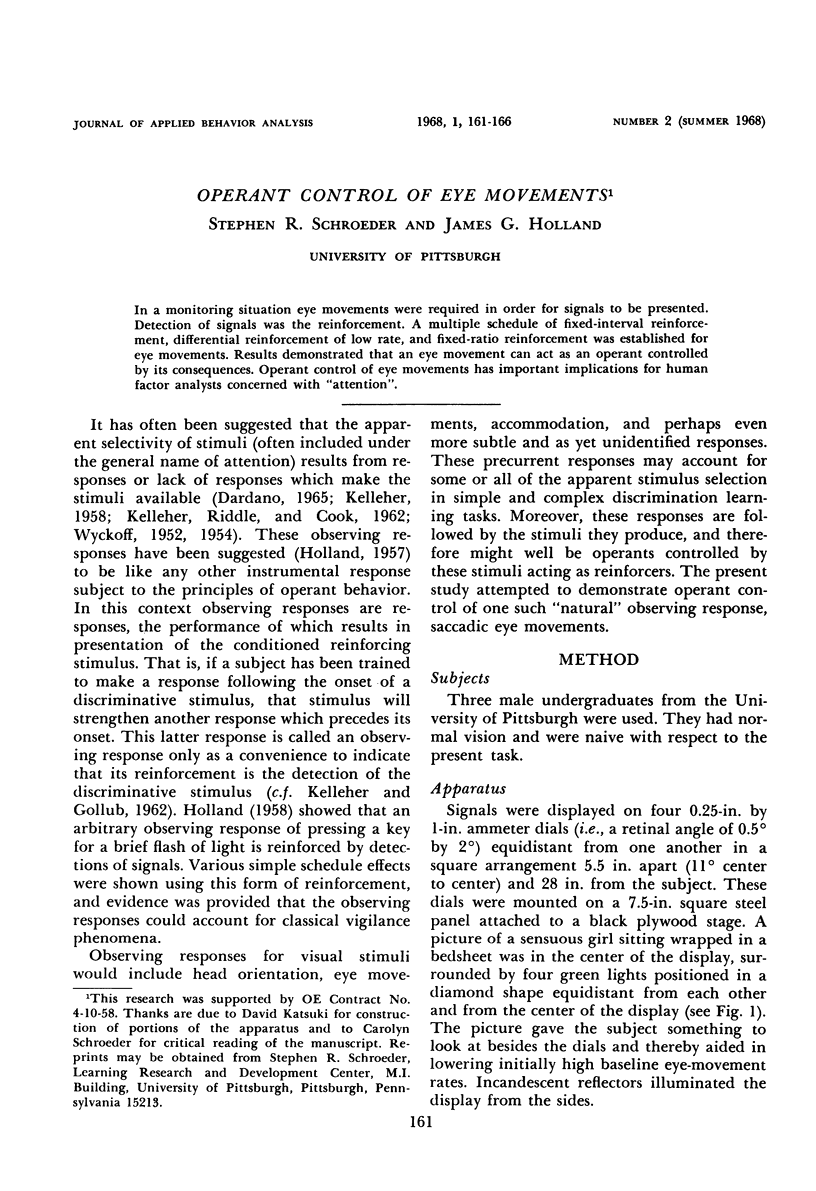
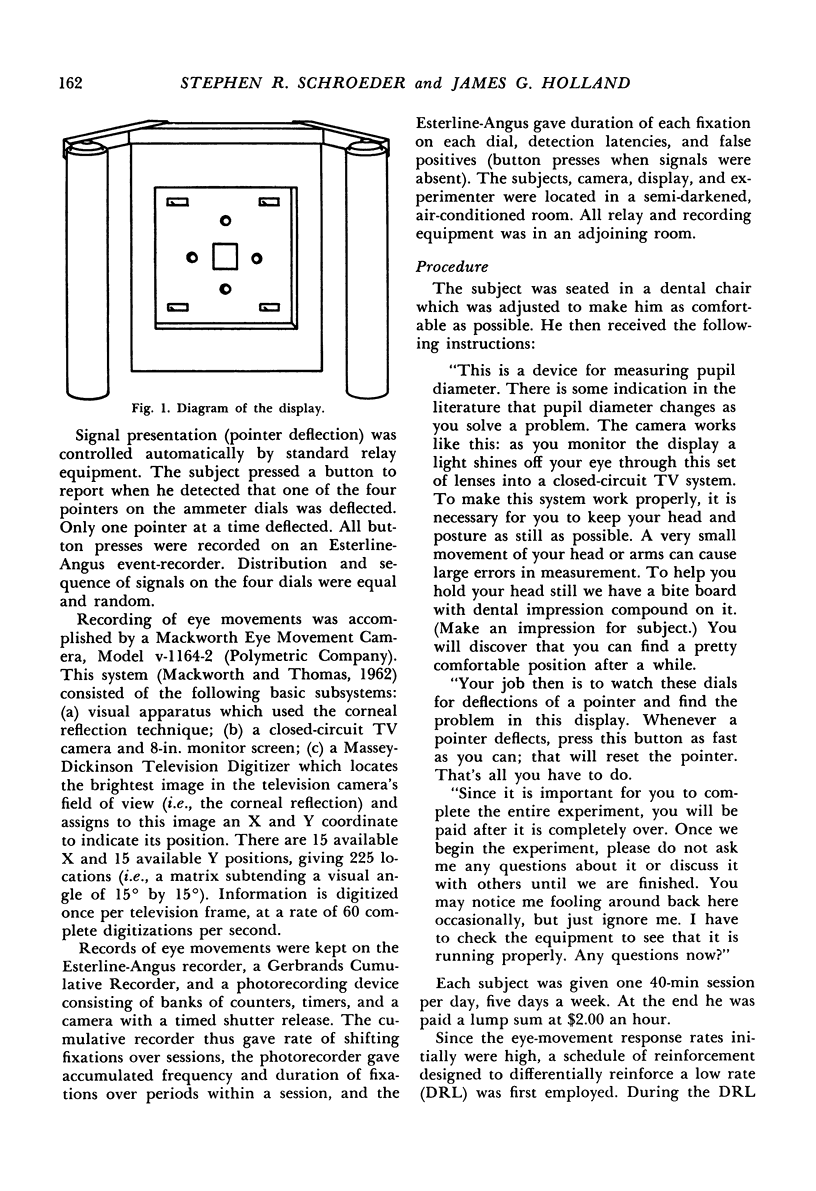
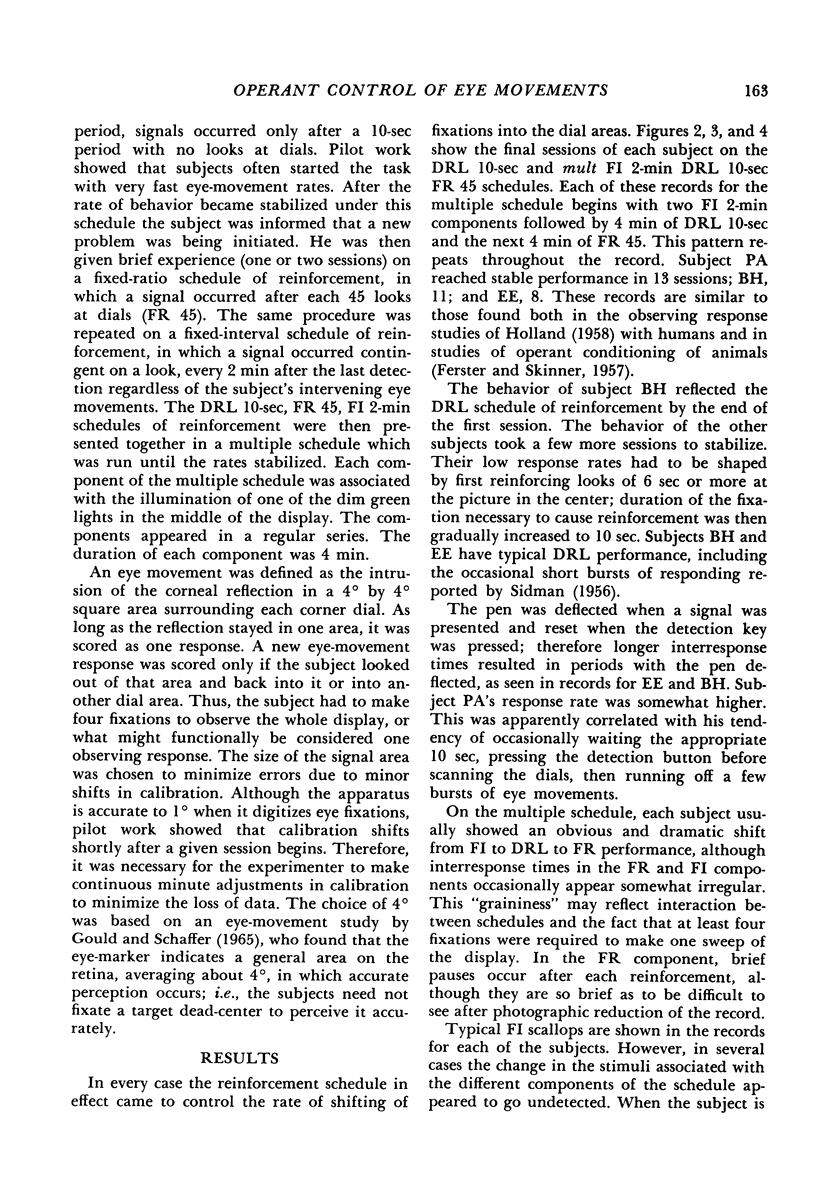
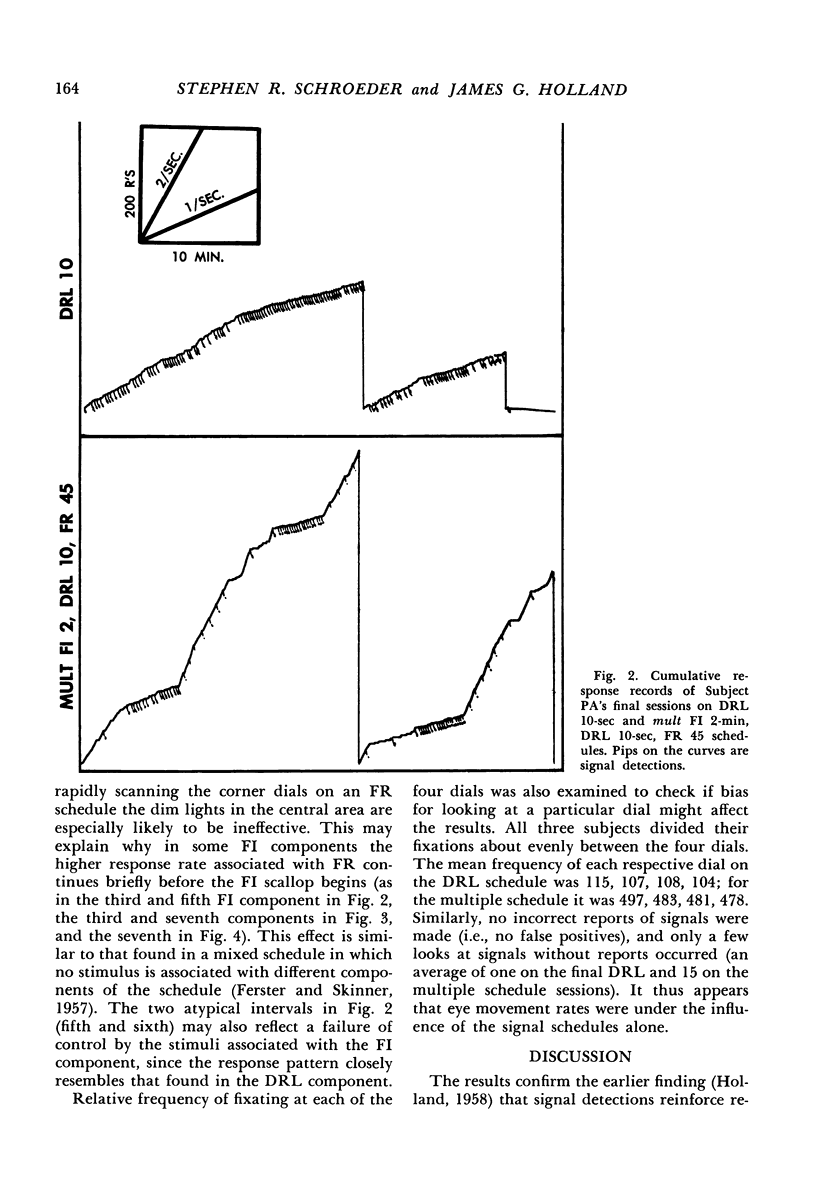
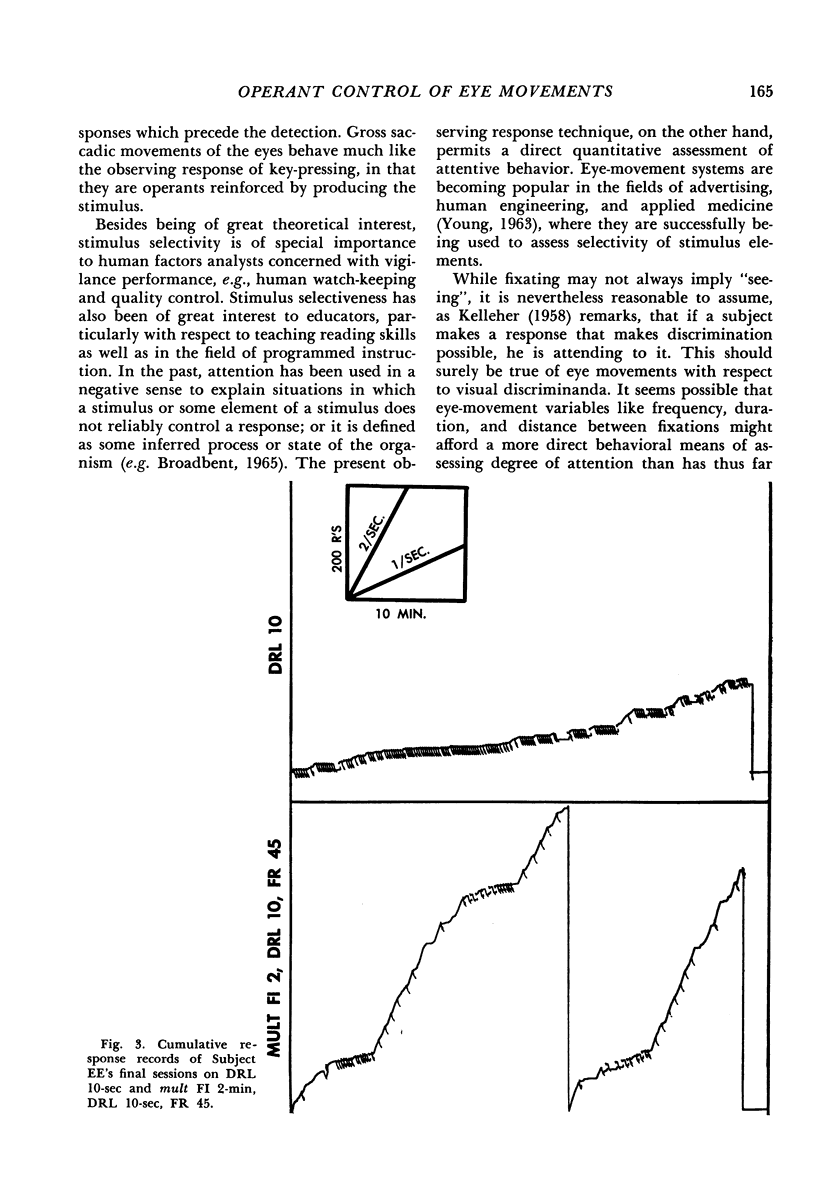
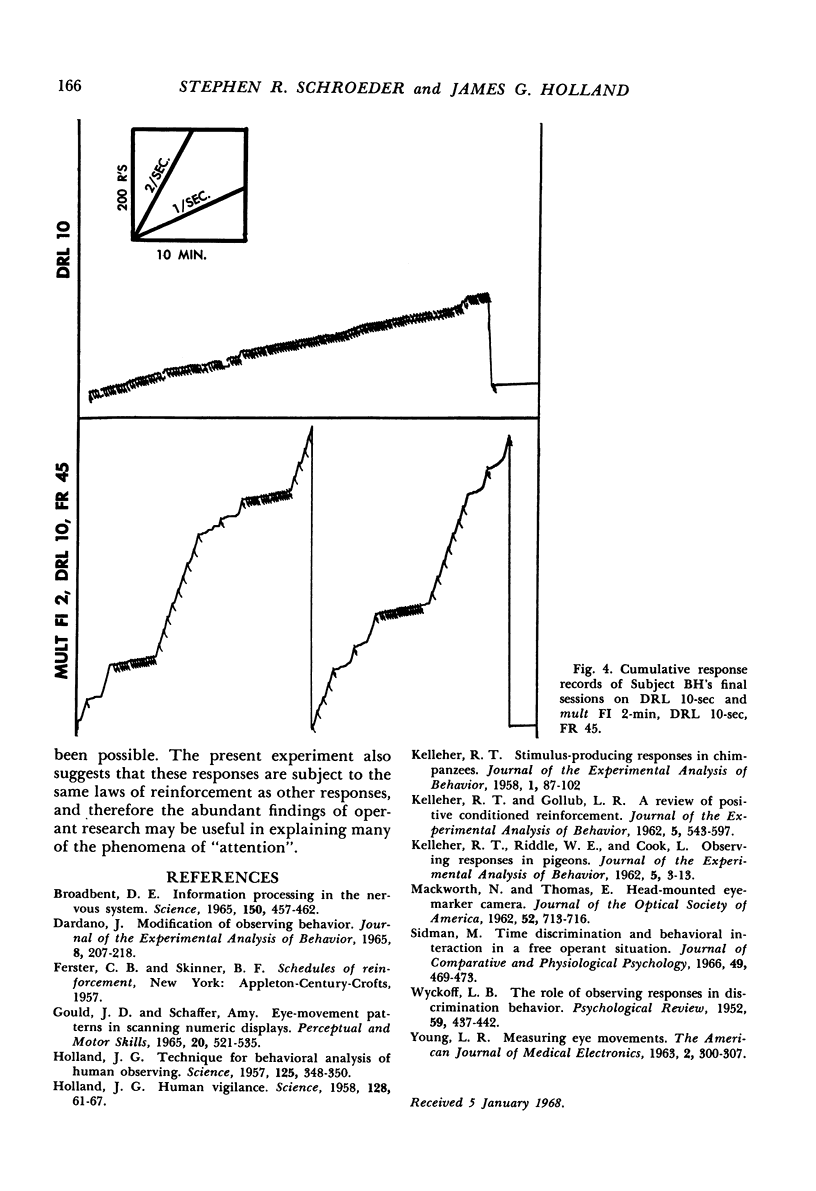
Selected References
These references are in PubMed. This may not be the complete list of references from this article.
- Broadbent D. E. Information processing in the nervous system. Science. 1965 Oct 22;150(3695):457–462. doi: 10.1126/science.150.3695.457. [DOI] [PubMed] [Google Scholar]
- DARDANO J. F. MODIFICATION OF OBSERVING BEHAVIOR. J Exp Anal Behav. 1965 Jul;8:207–214. doi: 10.1901/jeab.1965.8-207. [DOI] [PMC free article] [PubMed] [Google Scholar]
- GOULD J. D., SCHAFFER A. EYE-MOVEMENT PATTERNS IN SCANNING NUMERIC DISPLAYS. Percept Mot Skills. 1965 Apr;20:521–535. doi: 10.2466/pms.1965.20.2.521. [DOI] [PubMed] [Google Scholar]
- HOLLAND J. G. Human vigilance: the rate of observing an instrument is controlled by the schedule of signal detections. Science. 1958 Jul 11;128(3315):61–67. doi: 10.1126/science.128.3315.61. [DOI] [PubMed] [Google Scholar]
- HOLLAND J. G. Technique for behavioral analysis of human observing. Science. 1957 Feb 22;125(3243):348–350. doi: 10.1126/science.125.3243.348-a. [DOI] [PubMed] [Google Scholar]
- KELLEHER R. T., GOLLUB L. R. A review of positive conditioned reinforcement. J Exp Anal Behav. 1962 Oct;5:543–597. doi: 10.1901/jeab.1962.5-s543. [DOI] [PMC free article] [PubMed] [Google Scholar]
- KELLEHER R. T., RIDDLE W. C., COOK L. Observing responses in pigeons. J Exp Anal Behav. 1962 Jan;5:3–13. doi: 10.1901/jeab.1962.5-3. [DOI] [PMC free article] [PubMed] [Google Scholar]
- MACKWORTH N. H., THOMAS E. L. Head-mounted eye-marker camera. J Opt Soc Am. 1962 Jun;52:713–716. doi: 10.1364/josa.52.000713. [DOI] [PubMed] [Google Scholar]
- SIDMAN M. Time discrimination and behavioral interaction in a free operant situation. J Comp Physiol Psychol. 1956 Oct;49(5):469–473. doi: 10.1037/h0041892. [DOI] [PubMed] [Google Scholar]
- WYCKOFF L. B., Jr The role of observing responses in discrimination learning. Psychol Rev. 1952 Nov;59(6):431–442. doi: 10.1037/h0053932. [DOI] [PubMed] [Google Scholar]
- YOUNG L. R. MEASURING EYE MOVEMENTS. Am J Med Electron. 1963 Oct-Dec;2:300–307. [PubMed] [Google Scholar]


